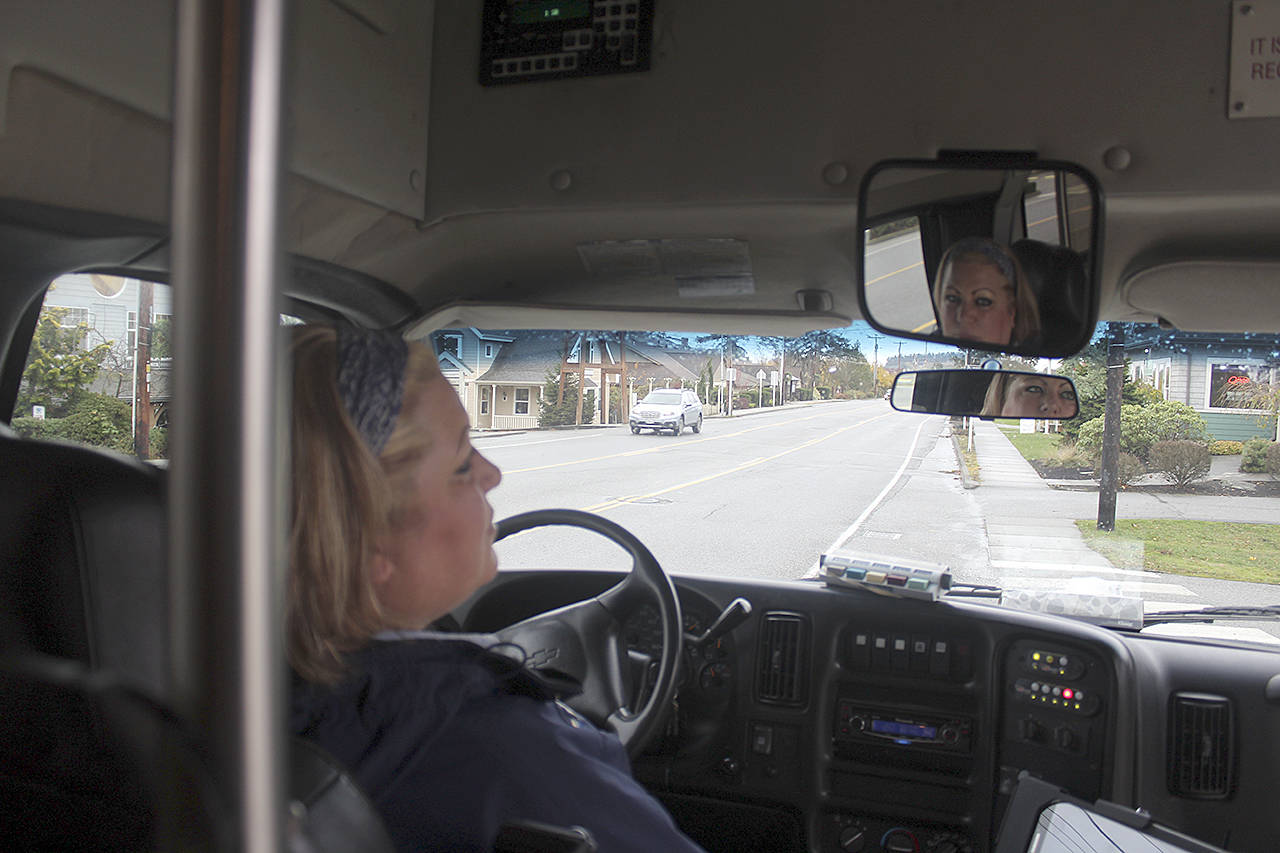Hands off the wheel.
Donna Stimpson believes that’s the best way to get to work or school — a routine she’s followed for some 20 years using Island Transit buses and commuter vans.
“I live in Clinton and now have been working in Coupeville for over 13 years taking the bus to work and home every day,” she said. “It is so great to be able to let someone else do the driving, see the folks and knit.”
THIS WEEK, Island Transit celebrates 30 years on the roads of Whidbey.
Its Monday-through-Friday bus service on Whidbey is only one of two fare-free systems remaining in Washington state; the other is in Mason County.
Fares were added on its Camano Island to Everett routes last year.
At 10 a.m. Friday, a birthday celebration at Oak Harbor’s Harbor Station is planned, followed by an afternoon of music, clowning around, prizes and surprises on buses traveling along Route 1, which traverses north and south along Whidbey’s two highways.
Over its 30 years, the system has weathered mismanagement, a financial crisis, employee lay-offs, route reductions and declining ridership. Earlier this year, auditors determined the system’s cash position is strong and it’s already paid back a $2-million bond borrowed in 2014.
The agency is partly funded by a 0.09 percent sales tax.
ISLAND COUNTY’S first bus picked up 161 riders its first day, Dec. 1, 1987. The following November, two riders decided to get married on one of its buses.
Last year’s ridership added up to 860,811 on Whidbey and Camano Island buses, paratransit and van pools.
“So the first day of service we had 161 people on the bus in the Oak Harbor area.
“Today, between the two islands, we’re moving 9,000 to 11,000 people a week,” said Mike Nortier, Island Transit executive director.
Of 53 commuter vans that are available from Island Transit and charged based on mileage per month, 30 are filled with 5 to 12 Boeing workers every day.
Getting the word out to other employers about van pool availability is among the transit system’s goals. It’s also accessing all of Whidbey’s ride services, such as those helping with rides to hospitals for the elderly and disabled veterans.
“We’re always looking for ways to get people in van pools or on buses and get more cars off the road,” Nortier said.
DURING THE transit system’s first 13 years, ridership steadily increased as more routes, the van pool and Camano Island routes were added.
Ridership declined 9 percent in 2000, then saw spikes of 15 percent and 19 percent, respectively, in 2006 and 2008, during economic downturns.
Over the years, the transit system has won awards for its safety record.
Many of its drivers are long-timers who know their riders’ names and schedules.
“The drivers are wonderful and so reliable even when the weather turns bad,” said Stimpson, who also relied on Island Transit when attending Skagit Valley College, using the 30-minute ride to tackle homework.
Working in Oak Harbor for four years after that, she joined with other commuters from Clinton, using one of Island Transit’s white vans.
DURING 2016,Island Transit’s fleet of buses racked up some 2.76 million miles.
Operating expenses are budgeted at $12.2 million for 2018, which includes a return to Saturday services, cut in 2014.
Island Transit employs 114 people.
Ross Goodwin, another longtime Route 1 commuter, regularly hopped aboard the bus from Clinton to Langley in the early 1990s. Now his ride to Oak Harbor is longer, but still enjoyable, he said.
“I have gotten to know a lot of drivers over the years and they are very courteous and helpful,” Goodwin said.
“They watch out for passengers that might not know where they need to get off and make sure there are no rowdy passengers either.
“It is a great system and it has come a long way from the first few years.”



